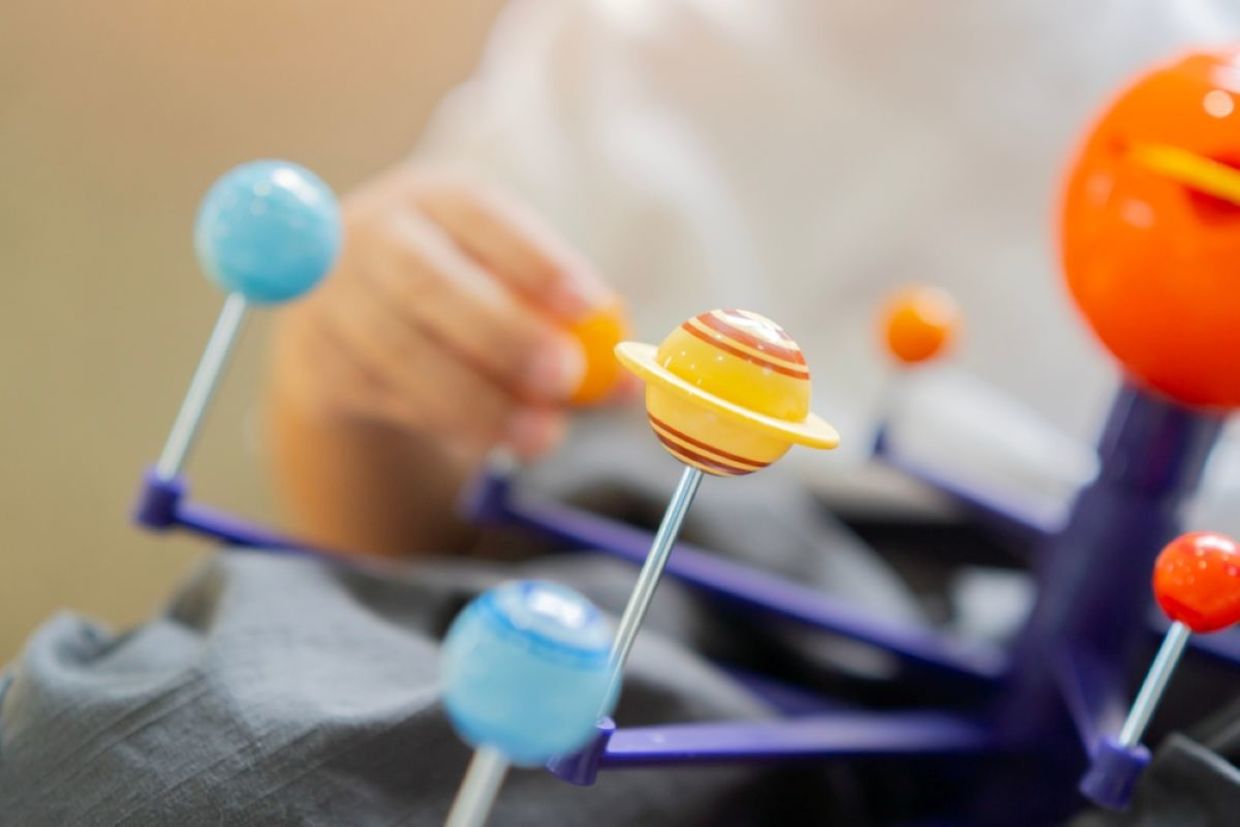
(Kunlathida6242 / Shutterstock.com)
Rehovot is a typical small and quiet Israeli city, much like any other. It boasts playgrounds, schools, cafes, and local shopping. However, in this city, there's more than meets the eye.
Nestled within this community is the well-known Weizmann Institute, Green Prophet reports. Named after former Rehovot resident and famed chemist Chaim Weizmann, the institute promotes scientific learning, including within the community. On the Weizmann campus sits a massive and renovated science park. What makes this park unique is its size. It’s the biggest outdoor science park on the planet.
View this post on Instagram
A Science Amusement Park
The Clore Science Garden, which the Davidson Institute of Science Education runs, stands out as the first completely outdoors and hands-on science museum — where visitors power the experience, The Jerusalem Post reports.
Visitors can expect a thrilling and state-of-the-art experience at the site. “We wanted this unique science museum to be as fun as Disneyland, as beautiful as a museum of modern art, and as thought-provoking as the research at the Weizmann Institute,” Amir Schorr, CEO of Fast Music Interactive, and curator and project manager of the Clore Science Garden, tells The Jerusalem Post.
“We wanted to rethink what a science museum should be. The idea of a scientific amusement park was the common ground of how we’d imagined it. This is very different from what you find around the world,” he adds. “The idea is not necessarily to teach you the science but rather something that makes you think. It’s the way that we experience something.”
The new park blends science, art, and nature, in over 100 installations and interactive displays. The park is designed around eight main complexes and exhibits: light, movement, code, life, matter, brain, earth, and growth, which show nature through unique perspectives.
Life: A Massive and Interactive Human Sculpture
Imagine being able to climb a massive sculpture of a human being? It’s all possible at The Life Exhibit, which hosts the towering structure, according to the Clore Garden of Science website. The interactive statue includes organs such as the eyes, heart, diaphragm, and kidneys, with body parts mechanically designed and visitors able to make the body “work”, allowing human anatomy to come alive.
View this post on Instagram
Light: A Journey into a Giant Kaleidoscope
The Light exhibit focuses on light, perceptions, illusions, and vision, according to Green Prophet. It also contains a dazzling tunnel of mirrors. Visitors can check out a shipping container, which is about 40 feet long, and acts as a life-sized kaleidoscope, according to the Clore Garden of Science website. It’s here where they can embark on a journey of unique patterns and colors, and manipulate light and play with reflection.
View this post on Instagram
Code: Programming Without Screens
At the code exhibit, you can take computer coding off-line and turn it into a physical experience. The environment inspires people to be playful, creative, improvise, and work together in real-time. Filled with input and output devices, the exhibit allows guests to explore sound, video, and motion.
Growth: Planting Food for Thought on Agriculture
The growth exhibit highlights a vital source of nourishment: plant life. At the exhibit, visitors can check out greenhouses, hydroponic growth systems, new technology, and a weather station. It also digs into topics including agrotech and traditional agriculture, methods for measuring plants' needs, plant adaptations, and the effects of climate change on plant development.
Earth: A Living Treehouse
Visitors learn about the planet while climbing through an eco-friendly treehouse with bridges and ropes attached. It’s here where they can also navigate decisions involving sustainability and composting. The exhibit also unearths natural processes which involve the transfer and balance of energy.
The spectacular treehouse was hand-crafted by the Mexican group Arquitectura Mixta, The Jerusalem Post reports. It took six months for the group to build the bamboo structure, which features sustainable materials, and includes hanging tunnels, viewing platforms, and lounging nets.
Movement: A Giant Pinball Machine
The movement exhibit brings physics to life with a giant pinball machine. This fun and interactive game teaches participants about movement using gravity and water, offering an understanding of physical principles.
Matter: Exploring the Smallest and Largest Structures
In the “matter” exhibit, guests can discover more about the smallest to largest structures in the universe, according to the Clore Garden of Science website. They can climb a molecule of carbon, catch a glimpse of microscopic organisms otherwise invisible to the naked eye, and observe the relative size of different planets and the sun.
The Everything Brain Complex
The Everything Brain complex hosts a series of mind-bending optical illusions, The Jerusalem Post reports. These installations are designed to show how the brain processes information and makes sense of the world around it. It’s a playful way to explore how the mind works, helping visitors better understand the perception of the human brain.
Legacy Square
Legacy Square hosts exhibits from the previous iteration of the museum, before the redesign, Green Prophet shares. Visitors can enjoy the surroundings in the outdoor courtyard.
Cutting-Edge Indoor Labs
Although the museum is primarily outdoors, there’s more to explore indoors: including an AI media lab, a culinary lab, and a multidisciplinary lab. The fascinating labs allow for hands-on exploration and experimentation at the tip of your fingers.
A Periodic Table Amphitheatre
The movie theater in the center of the garden has 250 seats and is created to look like a life-sized periodic table, according to The Jerusalem Post. The dome has been converted into a movie theatre that resembles a planetarium, with visitors able to lounge on floor cushions, look up at the stars, and watch movies on the walls and ceiling through a projector.
Not Just for Kids
The park is beautiful, hands-on, and fun, and there is something there for everyone. Visitors of all ages can enjoy the interactive exhibits and picturesque setting and learn something new about science.
“I always tell my team, ‘Don’t design for kids, design for yourself,’” Schorr tells The Jerusalem Post. “I still have an inner kid in me. We aimed for a challenge for everybody, not just kids. When a scientific park is located in the middle of one of the best scientific research centers in the world, it doesn’t matter what age you are, you will get something out of the exhibits,” he adds.
The impressive museum shows that when it comes to science there’s no limit to fun and learning.
YOU MIGHT ALSO LIKE:
Israeli Scientists Are Turning Pencils Into Computer Chips
Scientists Discover the Language of Plants
New Israeli Interactive Zoo Allows Visitors to Experience How Animals’ Move and Act







